The yachting°com Sailing Guide to Spain
Why sail to Spain?
Spain is a beautiful and varied Mediterranean sailing destination. The season here is endless and the conditions are ideal, especially for experienced sailors. Spain simply gets under your skin. You can explore it in the most beautiful and adventurous way on a yacht.
- You'll enjoy wild unspoilt nature, ancient monuments and remarkable modern architecture, bustling cities and deserted The
- Balearics'
- more tranquil coves
- and beautiful scenery will delight the recreational boater in
- the area . The
- Canary Islands will be the place
- to be for sports sailors and to experience unbridled ocean sailing
- In Spain, the vibrant nightlife, sultry flamenco, delicious tapas and fragrant paellawill spice things up
Ask me about sailing in Spain.
International Numbers:
UK: +44 208 08 98 515
DE: +49 211 54 69 22 23
CZ: +420 222 528 222
RU: +7 499 609 4515
SK: +421 232 195 340
Leave your contact details below:
A guide to the sailing regions of Spain
Spain is a very diverse destination from a sailor's point of view. It boasts more than 5,000 kilometres of coastline and a multitude of islands and islets. The distances between islands are greater than in Croatia, so it is ideal to charter a boat for at least 14 days.
The Balearic Islands will delight you with their unspoilt nature, beautiful harbours and deserted beaches. Young people will appreciate the nightlife in Ibiza. A separate chapter of sailing in Spanish waters is the Canary Islands
The mainland coast of Spain will be of particular interest to those who like to combine a boat holiday with an exploration of Spanish culture and mood.
Balearic Islands
The Balearic Islands are a beautiful sailing region with beautiful nature, beaches and wonderful marinas with a rich history. It is made up of the Balearic Islands proper (the islands of Mallorca, Menorca and several smaller islands and islets such as Cabrera) and the Pityus Islands (the islands of Ibiza, Formentera and several other islands).
Each of the three main islands, Mallorca, Menorca and Ibiza, is a separate sailing area. It enjoys stable weather and is the place with the longest sailing season in the entire Mediterranean (similar to Sicily or the southern coast of Turkey). The yachting season in the Balearics runs from April until the end of October. There is a relatively long distance between the islands, so if you are sailing here you are unlikely to be crossing from one island to another.
It's not a destination for complete beginners, because when the Balearics have a champagne wind it's really worth it. The weather can be extremely challenging and the sea swell very unpleasant. It can also be an advantage - in stronger winds you can circumnavigate all three islands in a week. But in summer the weather in the Balearics is relatively stable.
Mallorca
Mallorca is the largest of the Balearic Islands and is also where you will find the most charter companies and boats. Mallorca combines everything we love sailing for: beautiful nature, rich history, bays, beaches, small harbours and adjacent islands. Palma de Mallorca is a magnificent medieval town and harbour that was already important in the days of ancient Greece.
The Cabrera Nature Reserve and National Park
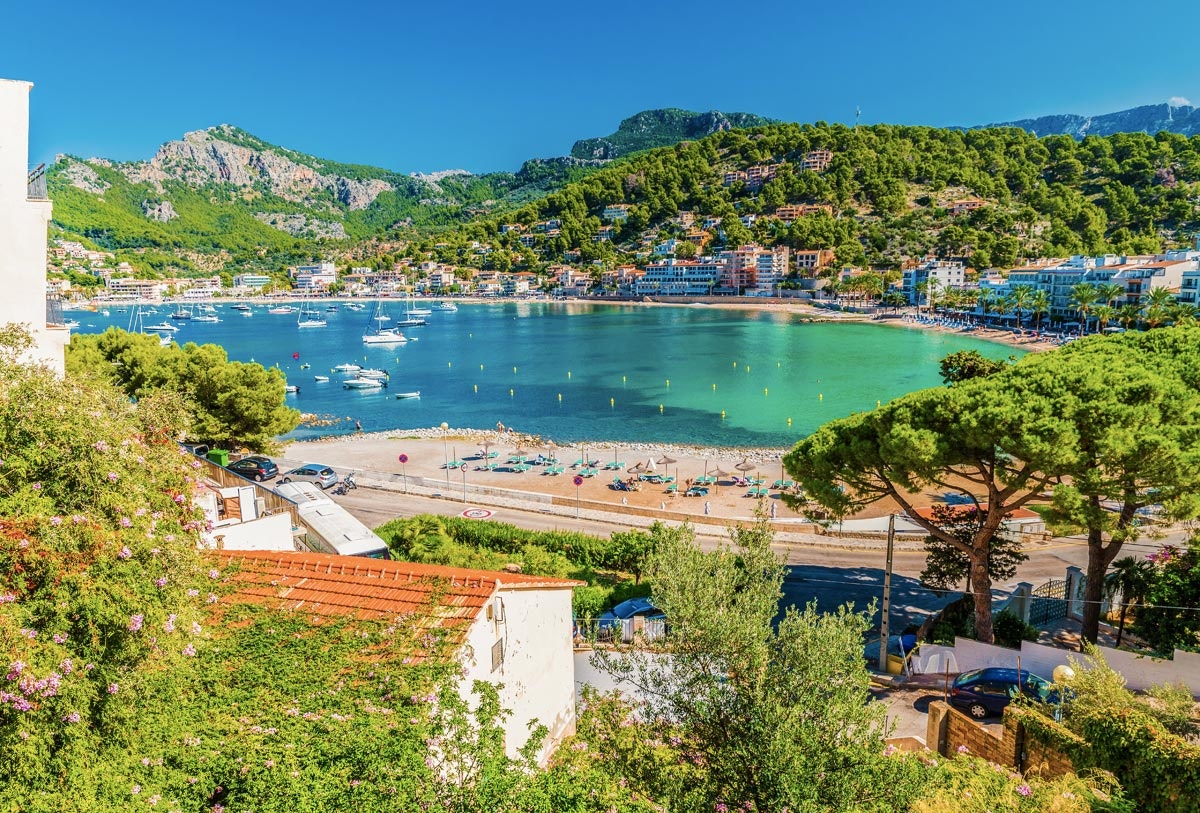
Menorca
Menorca is a rugged island with endless virgin coves and paradise beaches, more than Mallorca and Ibiza combined. Most of these beaches are unspoilt and only accessible from the sea. For yachtsmen, this is a truly ideal island for sailing and swimming. In the north of the island, the beaches tend to be golden to red, while the southern coast is lined with white sand beaches.
The island boasts a natural diversity that allows us to admire endemic species. In addition to its beaches and impressive nature, Menorca has towns that tell many stories of its interesting past. The towns of Ciutadella and Mahón are well worth a visit.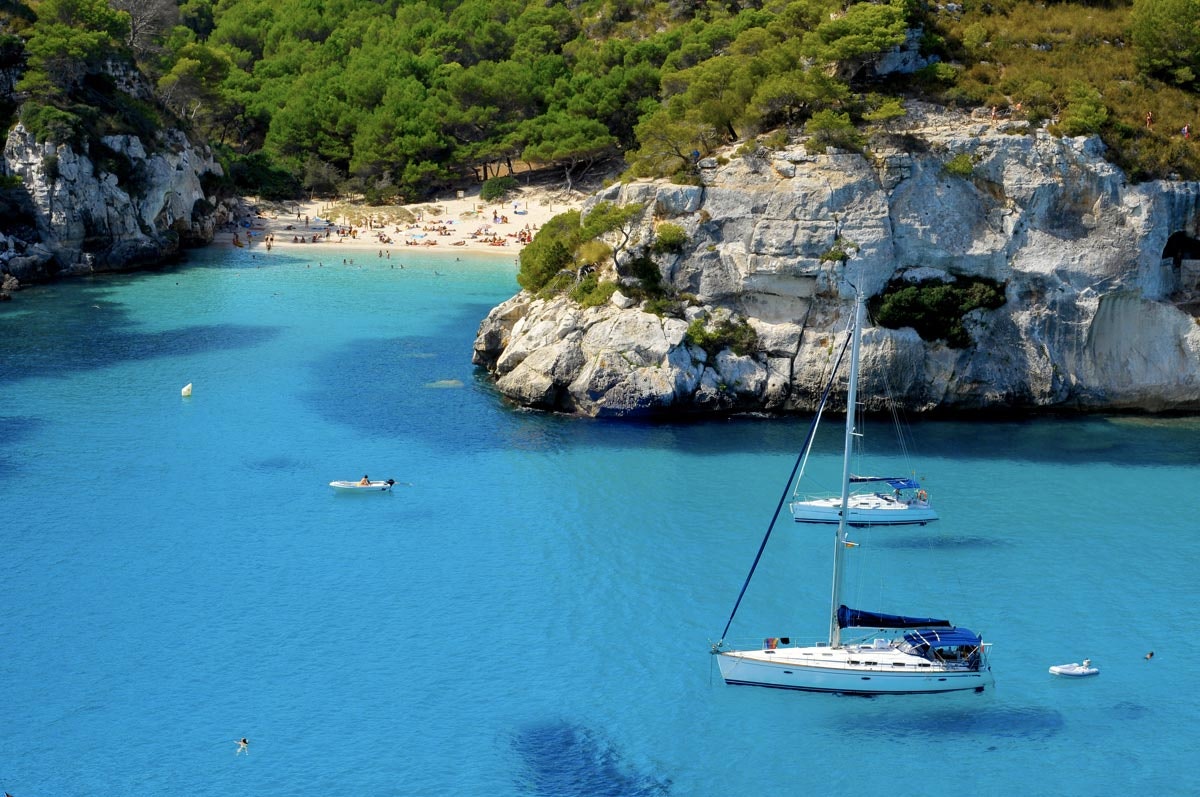
Ibiza
Theisland of Ibiza is a centre of entertainment and nightlife, ideal for young people. Renting a boat can also be seen as a form of relatively cheap accommodation compared to hotel prices in Ibiza.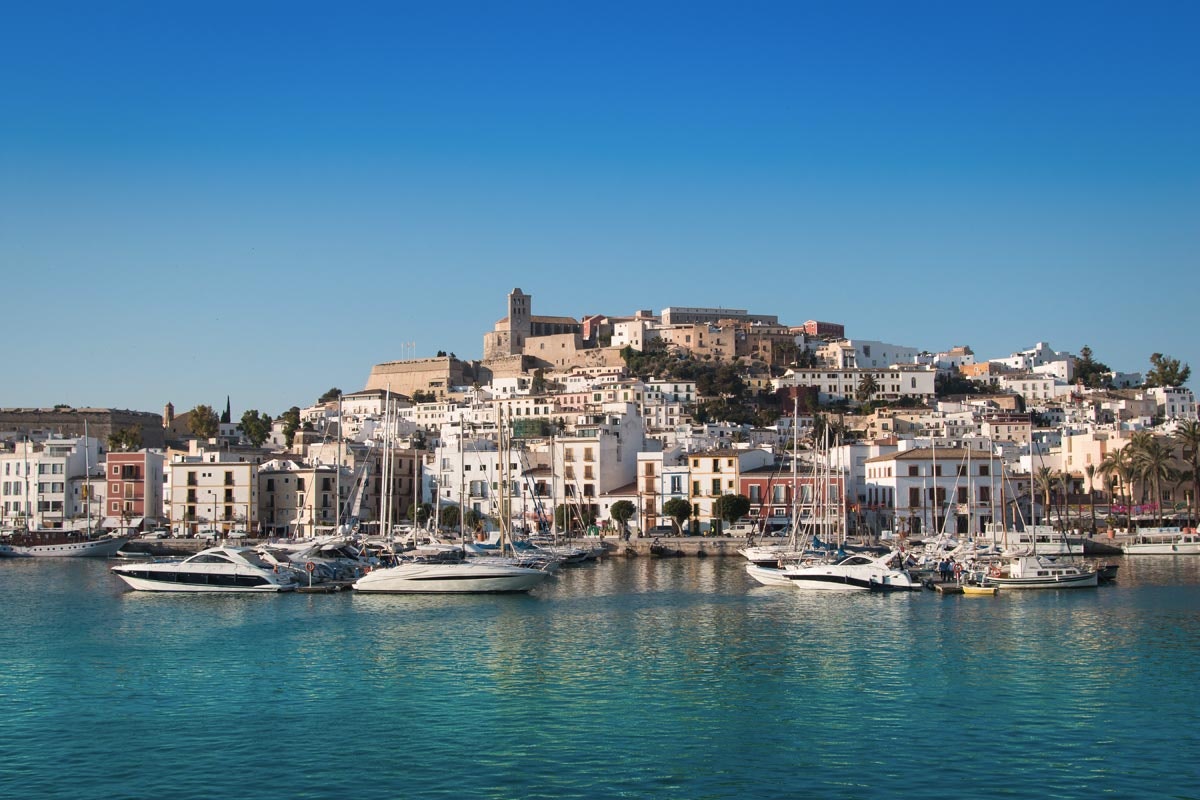
Formentera
Neighbouring Formentera
is the opposite of Ibiza. It is unspoilt, beautiful and only accessible by boat. It is famous for its white sandy beaches, azure Caribbean-like sea and wonderful tranquillity. It has rightly been called the last Mediterranean paradise. 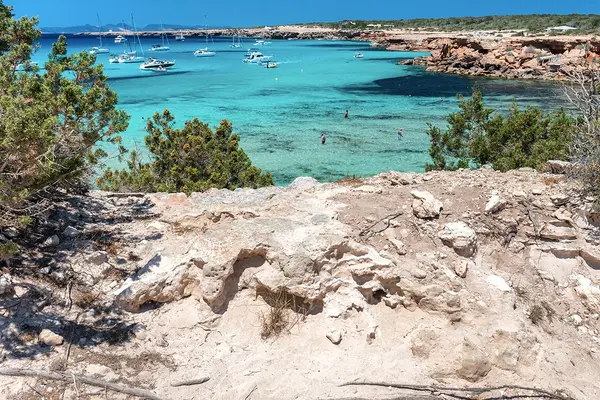.jpg)
Canary Islands
The Canary Islands are a very demanding and accessible year-round sailing destination. It offers unique experiences and challenges, but only truly experienced sailors or crews led by an experienced skipper will be able to compete. Sailing around the islands of La Palma, El Hierro or La Gomera is already a truly challenging ocean sailing experience.
Each of the islands of eternal spring captivates us with a completely different natural scenery. Fuerteventura is lined with long sandy beaches, the island of red volcanic rock Lanzarote only turns green in February and March, the jagged and steep Tenerife shows snow-capped peaks. Gran Canaria is literally a miniature continent. You'll find everything from dry desert landscapes to rainforests. The other three smaller islands of La Palma, Gomera and Hierro, with their secluded beaches and preserved nature, are already being swallowed up by the wild Atlantic.
It is possible to sail from Fuerteventura, Lanzarote, Gran Canaria or Tenerife. The most interesting cruise promises to be the route from Gran Canaria or Tenerife towards the islands of Gomera, Hiero and La Palma. Islands lying away from tourism, islands with beautiful and wild nature whipped by the ocean. It's a sailing challenge you can't resist.

Spanish Mediterranean coast
Spain's Mediterranean coast also offers many interesting places, but it cannot compete with the Balearic and Canary Islands.
The most interesting is certainly the Costa del Sol between Malaga and Cadiz. The sun is said to shine here three hundred days a year and the sea is the colour of emeralds. And you can sail from the Mediterranean through the Strait of Gibraltar to the Atlantic to another sailing world. A world of strong tides, currents, big waves and strong winds. And to the wild beauty of the Atlantic coast of Spain.
Sailing south around the Costa del Azahar (Orange Blossom Coast) and the Costa Blanca
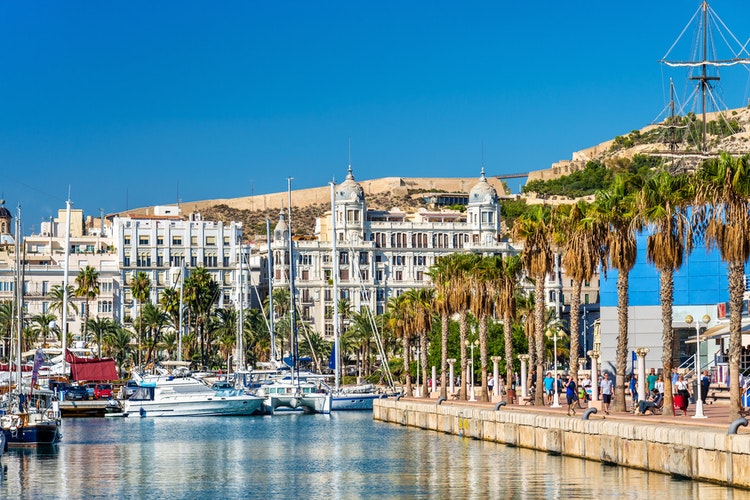
The Catalan coastline from Barcelona north to France, known as the Costa Brava (Wild Coast), is full of beaches and hotel resorts, but not so attractive to yachtsmen. However, chartering a boat in Barcelona will offer you a unique opportunity to discover a city full of modern architecture, monuments and bustling city life with street music and renowned tapas bars. You can sail along the Catalan coastline, enjoying the sun and tranquillity aboard a sailboat with family or friends. Barcelona's location also makes it a good base for sailing to the Balearic Islands.
Weather and climate in Spain
The Spanish climate
is very diverse. The east and south of the country are very warm, sunny with minimal rainfall. Winters are mild. The northern coast is rather cold and characterised by high rainfall. Theaverage air temperature is around 25 °C in summer
and 15 °C in winter.- The Spanish islands are very different from the rest of Spain. The Canary Islands have a subtropical climate with very summer temperatures and minimal rainfall. Winters are mild and pleasant. Sea temperatures rarely fall below the long-term average of 20°C.
- The weather in the Balearic Islands is much more capricious and erratic. Summers are hot , winters can be rainy accompanied by cold winds from the sea.
- Barcelona boasts a Mediterranean climate with mild winters and hot summers. The coldest month is January and the hottest is August. Temperatures here are relatively stable and it is not too windy.
Where to get the weather forecast at sea?
Weather can be obtained on VHF channel 10: 06,35; 09,35; 14,35; 19,35 UTC, then channel 16: every 2 hours "to all ships". Menorca: channel 68. Radio 1755 kHz Palma 07,50; 13,03; 9,50 UTC.
Wind in Spain and how does it blow?
The prevailing wind is not stable in the Balearic Islands. Sailing can be made very difficult by a mistral, strong to gale force cold wind. The winds are most frequent and strongest in winter and can reach up to 12 BF
.The mainsheet, unlike the Croatian juga for example, does not come gradually but very suddenly and can last for several days. Yachtsmen must therefore keep a close eye on weather forecasts in this area . In the Canary Islands, the trade winds blow regularly.
However, the seemingly ideal sailing conditions are complicated by acceleration zones. These are created by the very high mountains on the islands. The sea around the islands is full of windless places (the so-called wind shadow), but also places where the wind is stronger than in the surrounding area (the so-called acceleration zones). Moreover, the wind strength in the acceleration zones is very fast - a sharp increase from 5 BF to 8 BF is not something that would please a sailor.
Gastronomy in Spain and specialities of Spanish cuisine
Spanish cuisine is colourful, flavoursome and very varied, with different regions differing in their style of preparation and combinations of ingredients. On the coast, fish and salads predominate, in the interior meat dishes and thick soups. Fresh ingredients are the main ingredients used, and the frequent use of olive oil and garlic is typical everywhere. Basic ingredients include fish, seafood, meat, fresh vegetables (potatoes and tomatoes are popular), fruit, herbs, saffron, hot peppers, rice and olives. Spaniards also love one-pot stews, grilled meats, cured sausages and hams.
Paella
Gazpacho - a
-
Tortilla de patatas
Cozido (or also puchero, olla podrida, caldereta, frite, cocido, caldo, marmitako) - a one-pot dish. Each region has its own special recipe.
Canarian Gofio
Pork in various forms dominatesthe cuisine of the Balearic Islands . The national dish is the lechona, a grilled piglet. Try the traditional sobrasada, a spicy sausage that can be spread on bread.
Important sailing informationSpain
has a decent sailing infrastructure, reasonable prices and a very long sailing season. We recommend booking marinas in advance, especially in high season. In high season, the marina you are looking for may be fully booked or available for an inadequate fee. It is also advisable to rent a current pilot book for your cruise. Be wary of bad parking, Ibiza in particular is notorious for fines.
In the Balearics, the state Ports IB marinas tend to be much cheaper than other commercial marinas. Ports Ib marinas can be booked and paid for online. It is also possible to use the CBBA Sea buoy system.
Diving in SpainThe Canary
Islands will capture the heart of every diving sailor. The visibility here is normally over 30 metres and the water temperature never drops below 20 °C even in winter. You'll enjoy breathtaking diving among the rocks and reefs of volcanic origin. Compared to the Mediterranean, the Atlantic is much more varied, with schools of colourful fish, giant porpoises, tuna, barracuda, moray eels, octopus and turtles. Schools of dolphins are also common and occasionally you may even come across whales or manta rays.
An unforgettable experience is diving in the nature and marine reserve off the island of Lanzarote, which consists of part of the northwest coast and the islands of La Graciosa, Montaña Clara and Alegranza
. Fishing is prohibited here and diving is subject to a special permit.
You will also be enchanted by the wilder Roques del Salmor on the island of El Hierro, whose massive rocks, thecliffs, caves and deeper crevasses offer hiding places for truly abundant schools of fish of all shapes and colours. You're likely to spot stingrays, manta rays, sharks and schools of snappers and barracuda.
We also highly recommend visitingthe
Cabrera Nature Reserve and National Park. Located in the south of Mallorca, entry is by permit and charges a fee, but it's well worth it.
Contact yachting°com today about your next sailing holiday in Spain or browse available yachts below.
Ask me about sailing in Spain.
Write us and we will contact you:
International Numbers:
UK: +44 208 08 98 515
DE: +49 211 54 69 22 23
CZ: +420 222 528 222
RU: +7 499 609 4515
SK: +421 232 195 340
